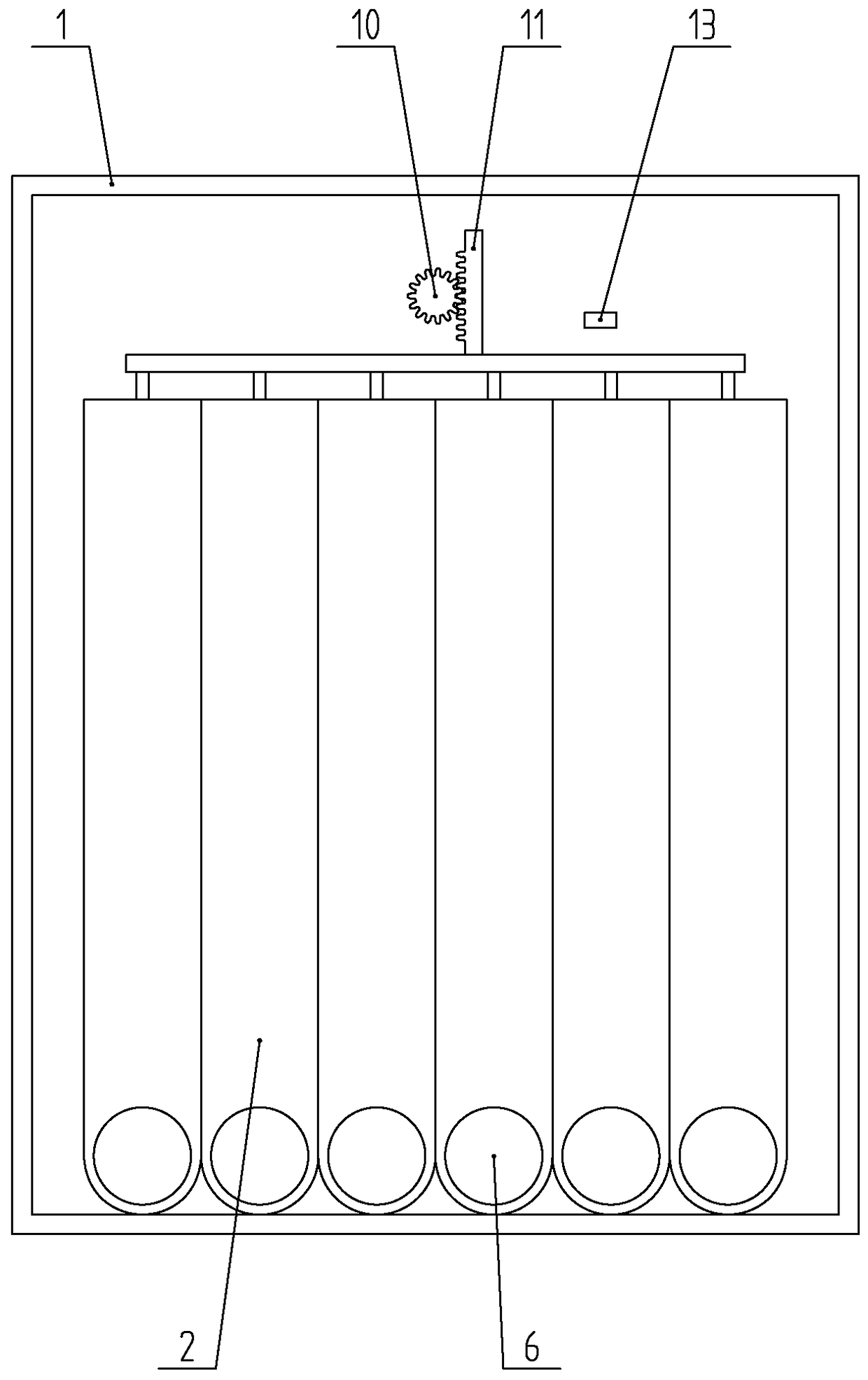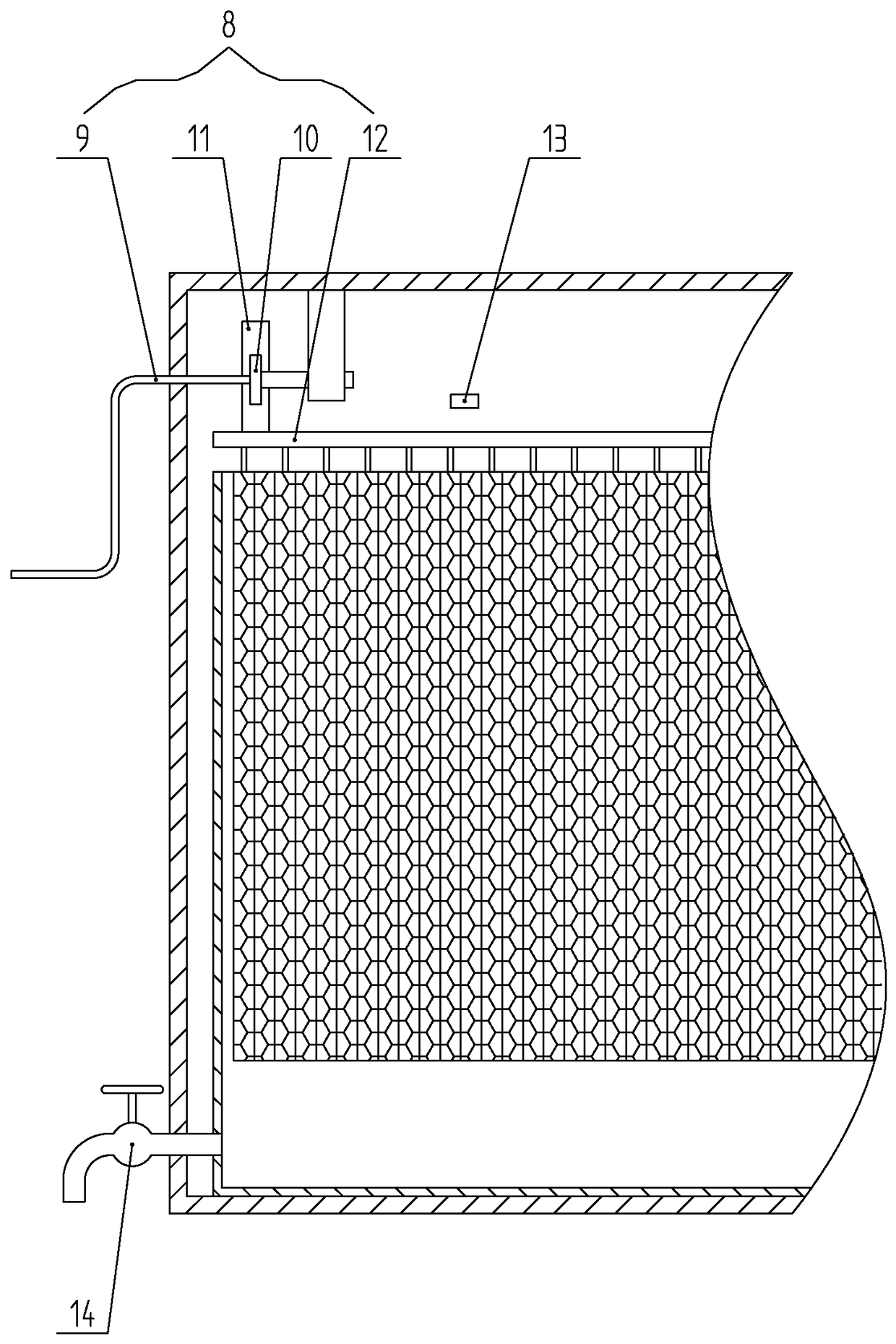A beehive capable of continuously extracting honey
A technology of beehives and boxes, which is applied in the field of beehives capable of continuous honey extraction, can solve the problems of increasing the workload, prolonging the honey extraction cycle, and difficulty in automation, and achieve the goals of reducing labor intensity, shortening the honey extraction cycle, and improving honey extraction efficiency Effect
- Summary
- Abstract
- Description
- Claims
- Application Information
AI Technical Summary
Problems solved by technology
Method used
Image
Examples
Embodiment Construction
[0032] The present invention will be further described below in conjunction with the accompanying drawings. The following examples are only used to illustrate the technical solution of the present invention more clearly, but not to limit the protection scope of the present invention.
[0033] Such as figure 1 , 3 Shown in and 4, a kind of beehive that can take honey continuously, comprises casing 1, is provided with a plurality of hives 2 with inner cavity and side bottom opening 6 in casing 1, and faucet is installed at opening 6 of hive body 2 14. A plurality of nest boards 3 are vertically arranged in the inner cavity of the nest body 2 along its length direction. The nest plate 3 includes a support body 4 and a half-nest structure 5 arranged on the left and right sides of the support body 4. The half-nest structure 5 is composed of two rows of nest room groups facing away from each other, and each nest room group consists of a plurality of half-nest structures. Room 7 i...
PUM
 Login to View More
Login to View More Abstract
Description
Claims
Application Information
 Login to View More
Login to View More - R&D
- Intellectual Property
- Life Sciences
- Materials
- Tech Scout
- Unparalleled Data Quality
- Higher Quality Content
- 60% Fewer Hallucinations
Browse by: Latest US Patents, China's latest patents, Technical Efficacy Thesaurus, Application Domain, Technology Topic, Popular Technical Reports.
© 2025 PatSnap. All rights reserved.Legal|Privacy policy|Modern Slavery Act Transparency Statement|Sitemap|About US| Contact US: help@patsnap.com



